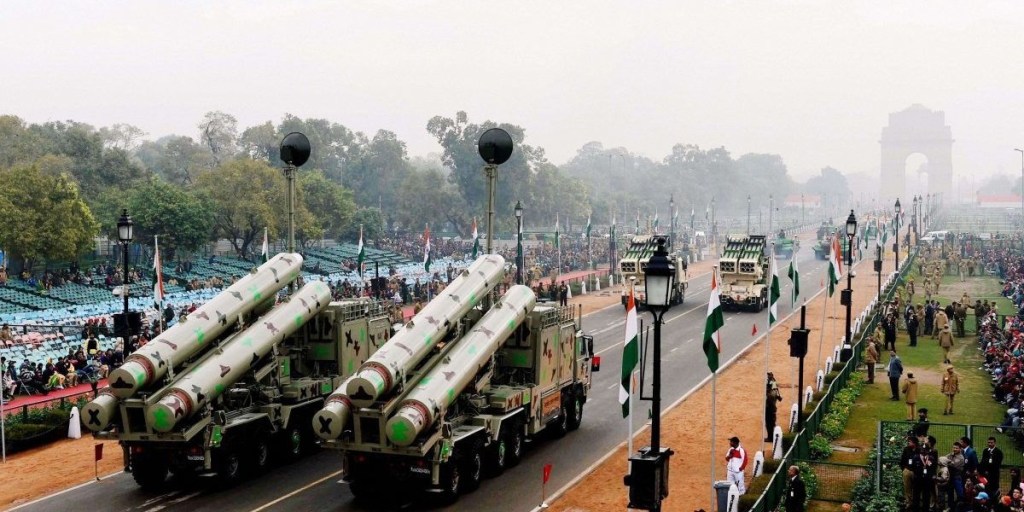By Amit Cowshish
In a bid to promote self-reliance in defence production, the Ministry of Defence (MoD) notified the third ‘Positive Indigenisation List’ (PIL) on August 28 proscribing import of 780 ‘strategically important Line Replacement Units, Sub-systems, and Components’ by Defence Public Sector Undertakings (DPSUs).
The ban will come into force gradually over the next five years between the end of next year and December 2028. What happens if an indigenised item is not available when the ban kicks in remains unclear.
The first two lists were notified in December 2021 and March 2022 banning import of 351 and 107 items respectively. The total number of banned items now stands at 1,238 which are in addition to the sub-list of 2,500 items that had already been indigenised by the DPSUs when the first list was issued.
Another three lists were parallelly issued by the MoD between August 2020 and April 2022 banning import of 310 major items by the armed forces that included some major platforms like Wheeled Armoured Fighting Vehicle (AFV), Light Combat Aircraft (LCA) MK I A with enhanced indigenised content, cadet training ship, apart from radars, missiles, and various types of ammunition and accessories.
These numbers are staggering but most of the items in the three DPSUs-related PILsare seemingly low-technology run-of-the-mill parts and components that go into manufacturing of the equipment, weapon systems and platforms by them.
The first of these three lists included a variety of nuts, bolts, screws, bushes, washers, gaskets, pins, hoses, sealing rings, rivets, clamps, plugs, elbows, valves, nozzles, pipes, and jets. Different sizes of the same item were listed separately to expand the list. The second list was not much different.
The third list too is of a piece with the first two as it also includes items like brazing wire, valve stem cell, lower and higher thrust bearings, central tyre inflation system, exhaust and cooling systems, switches, wiper blade, HF antenna, taxi light, rear lamps, flexible shafts, aircraft clock, button for Su-30MKI, air filter, fire detector, slide and swivel joints, float valve, lubricants for submarines, and bush for AMK-339.
Surprisingly, this list also includes an industrial grade laptop and an Automatic Flight Control System (AFCS) computer. For India, which is a world leader in Information Technology (IT) and grossed US$ 195 billion from the sale of IT products in the domestic and international market in 2021, dependence on import for meeting the requirement of these items cannot be a matter of pride.
The reason why these lists are being notified so persistently is difficult to fathom. If the objective is to demonstrate MoD’s resolve to push the envelope of self-reliance in defence via indigenisation of parts and components, this attempt at showcasing it is counterproductive, as it raises the question as to why the MoD did not ensure indigenisation of even parts and components all these years.
It would be equally inane to use these lists as an instrument to discipline the DPSUs and force them to indigenise the listed parts and components either on their own or by involving the private sector. As business enterprises, DPSUs’ actions are guided by commercial considerations. They would indigenise parts, components, assemblies, et al., if there is a business case for doing so. Economy of scales is crucial for any indigenisation effort.
Forcible indigenisation can be counterproductive as it may not be cost-effective. It can push up costs if the requirement is infrequent or limited in numbers. It can also throw up new challenges in regard to trials, testing, and integration, and result in disruption of the production schedule of the main equipment with which the indigenised components are to be integrated.
It is true that greater indigenisation means more business for the domestic industry, particularly the Micro, Small and Medium Enterprises. It may also generate additional employment. But these could be short lived benefits if there is no recurring demand for the indigenised items or if there are too many domestic companies vying for the same slice of cake in the monopsonic defence market. There is no way the MoD can assure a continuous flow or orders, without which the defence industry, especially the MSMEs, cannot survive in the long run.
Another possibility is that the PILs are intended to sensitise the industry about the impending requirements of the DPSUs, but the scanty information given in the lists cannot help the domestic industry design and develop products with the kind of precision necessary for their integration with the main equipment for which these are required.
It would be uncharitable to aver that these lists contain the items which the DPSUs were in any case planning to indigenise in the normal course of their business, which the MoD wants to showcase. In short, therefore, it is difficult to visualise what useful purpose is served by these PILs. The MoD would do well to be more forthright about it.
The ability to make parts and components which are freely available in the domestic or international market, or can be easily developed and manufactured, cannot lead to self-reliance in production of major equipment, platforms and weapon systems, which is what real self-reliance in defence means.
The author is Former Financial Advisor (Acquisition), Ministry of Defence.
Disclaimer: Views expressed are personal and do not reflect the official position or policy of Financial Express Online. Reproducing this content without permission is prohibited.

